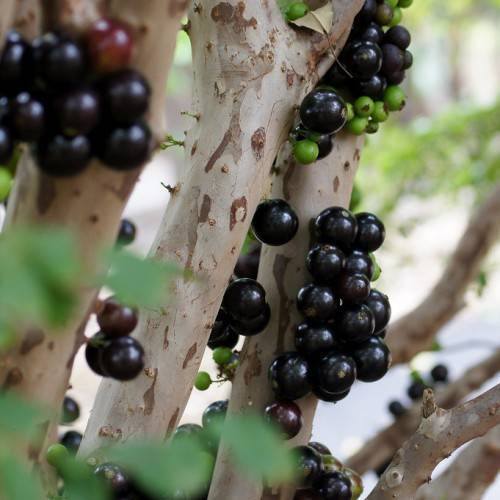
jaboticaba
Plinia cauliflora
Cycle:
Perennial
Watering:
Average
Hardiness Zone:
10 - 12
Flowers:
Flowers
Sun:
full sun
Fruits:
Fruits Ready In Summer
Edible:
Yes
Leaf:
Yes
Growth Rate:
Low
Maintenance:
Moderate
Tropical:
Yes
Care Level:
Medium
watering
Jaboticaba (Plinia cauliflora) should be watered every 6-7 days depending on weather conditions. The amount of water per session should be limited and it is best to use either a slow drip or a watering can with a fine rose so as to avoid water from running off the top of the soil. During hot and dry weather, it is recommended to water more frequently. During wet or rain periods, it may not be necessary to water. Avoid overwatering as this can cause root rot.
sunlight
Jaboticaba (Plinia cauliflora) is a native Brazilian plant species that loves sunshine! It thrives the best when it receives around 8-10 hours of direct sunlight each day. If the plant is positioned in too much shade—less than 6 hours a day—it is likely to suffer from poor flowering, poor fruit production, and weak overall growth. To ensure optimal growth and fruit production, try to keep the jaboticaba in an area that receives plenty of sun.
pruning
Jaboticaba (Plinia cauliflora) should be pruned 2 to 3 times a year. Pruning should occur in early spring (before bud break), mid-summer (July/August) and late fall (November/December). During the early spring and late fall periods, light pruning is best to remove dead or weak branches and promote healthy branching. Mid-summer pruning should be heavier to help thin out the canopy and allow for better air flow and sunlight penetration. New growth should be pruned back to 2 or 3 leaves, to keep the shape of the tree structured and symmetrical. These pruning techniques will help keep your jaboticaba tree healthy and robust.
